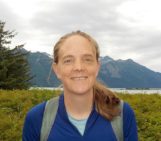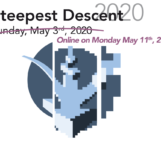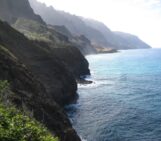![20 Years of GM [Part 2]: A conversation on change and progress with Geomorphology’s first and current presidents](https://blogs.egu.eu/divisions/gm/files/2025/04/GM-20th-anniv-banner-9-700x400.png)
This year marks the 20th anniversary of the EGU Geomorphology Division (GM). Many of us have found community, experienced our first conference presentation, and furthered our careers through GM. GM has grown to be mid-sized for EGU standards with ~700 abstracts submitted in 2024 – but we had to start somewhere. I spoke with GM’s creator and first president, Colin Stark (National Taiwan University), and GM’s current president, Kristen Cook (IRD, ISTerre, University Grenoble Alpes), to learn more about GM’s creation and growth over the last 20 years in size, diversity, and international presence. In our companion piece, former GM presidents Niels Hovius, Andreas Lang, Peter van der Beek and Dan Parsons gave us candid accounts of their own experiences.
How it started
It all began on the seaside in balmy Nice, France, at an overcrowded meeting co-organized by the European Geophysical Society and the European Union of Geosciences. Early GM presidents all remember this meeting as the starting point for envisioning the EGU as an organization to rival the American Geophysical Union (AGU). In EGU’s early years, Colin Stark was based in the US at Columbia University and involved in both AGU and the early EGU. His position just across the Atlantic gave him perspective on key differences between the groups, and he recognized a lack of focus on process-based geomorphology.
…Geomorphology was homeless. And I think most people on the US side were fairly happy with that. Most of them went to Hydrology and were content. On the American side of things, it was much more of a process-oriented emphasis of the conference and the meetings, whereas on the European side, Natural Hazards was very focused on outcomes and hazards and risk and related applications. And Hydrology was a little more narrow, and I felt like surface processors didn’t have a home, particularly on the European side. – Colin
Starting a geomorphology division within the EGU required “stealing” attendees from related existing sections like Hydrology and Natural Hazards. Luckily, the president of the Natural Hazards division at the time, Fausto Guzzetti, was amicable to the idea.
So it was mostly through collaborating with Fausto Guzzetti. He was a formative early president of the Natural Hazards Program. I asked him, could we maybe create a Geomorphology section and steal away some of your attendees and participants? If there was any pushback, there was this sense of like, ‘Oh no, we don’t want it. We have our group already. We don’t want to splinter off and lose people from hydrology or lose people from natural hazards.’ But he was incredibly encouraging and very helpful. If it wasn’t for him, the Geomorphology section wouldn’t exist. -Colin
How it’s grown
GM has grown a lot in the last 20 years. Including abstracts co-organized with other divisions, there were 1,900 submitted abstracts before COVID hit in 2019 (Fig.1).
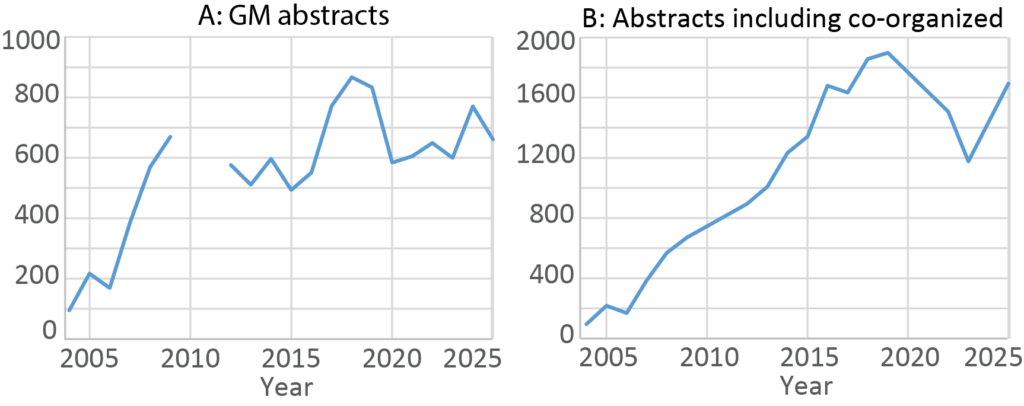
Figure 1. A: GM abstracts submitted from 2004-2025. B: GM abstracts submitted including in co-organized sessions.
EGU as a whole has grown to a size comparable to AGU – last year (2024) there were nearly 21,000 attendees (including ~2,500 online) from 130 countries, compared to ~27,000 AGU attendees. In fact, if EGU continues to grow at the rate it has, it could outgrow its home venue, the Austria Center Vienna (ACV). However, finding a convention center on the scale of San Francisco’s Moscone center (AGU’s homebase) is difficult in Europe. According to Kristen, larger centers are often too expensive or in cities that aren’t centrally located, and EGU has a great relationship with ACV that would be hard to give up. Personally, I look forward to my annual visit to Vienna for the EGU General Assembly – I’ve grown very fond of the city, and even finally started to wrap my head around navigating the convention center. It would be a shame to lose those experiences, but growth always comes with a cost.
International diversity
EGU has not only grown in size, but also in reach. In the early years, Colin remembers feeling a bit like an outsider running an EGU division while based in the US:
When I was putting this forward, I think there was a sense that Europe was still a little parochial. There might have been one – but I’m not even sure there was even one – president of any section or division from outside Europe at the time, whereas AGU couldn’t care less where people come from. You know, they’re automatically international. And it felt weird – not being American, but being kind of quasi-American and being based in the US and having to travel from the US to meetings, and pretty much everyone else could get on a train or some short flight, but I had to do this big international thing. So it might have been partly my perception, but also, I think it was reality that it was a bit odd to have an American involved in running EGU. -Colin
Although most division presidents are still European and based in Europe, there are now some who defy the norm by operating at least partially from places like California, Colorado, and Australia. Kristen is based in France, but is American. However, countries outside of Western Europe and the US are lacking in representation. On the level of abstract submissions and membership, though, internationality has increased. Since 2016, the number of countries represented by GM members has increased from 55 to a peak of 70 in 2022 (Fig. 2A). There have also been shifts in the most-represented countries: since 2016, Germany and the UK have shown slight declines in percentage (but not in absolute number) while Italy has increased in percentage and the number of Italian attendees has nearly tripled (Fig. 2B).
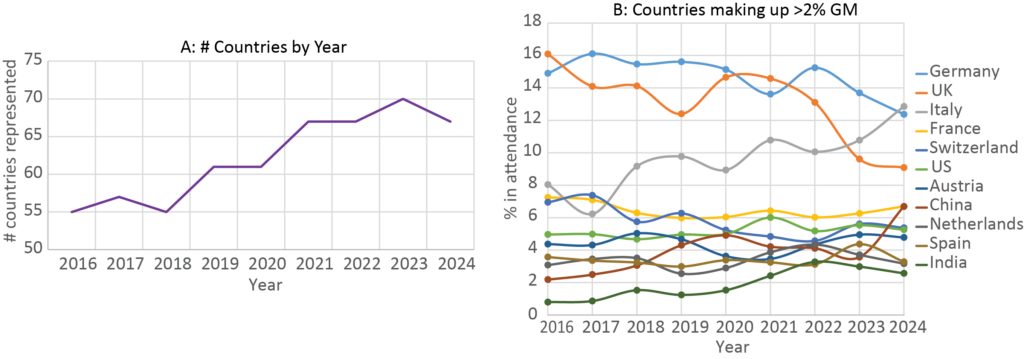
Figure 2. A: Number of countries represented by abstracts submitted to GM over the last 8 years. B: Number of abstract submissions from countries whose submissions make up >2% of GM abstracts over the last 8 years.
Continuing to increase international representation in GM will surely expand the diversity of ideas and perspectives in the division, increase international collaboration, and create opportunities for young scientists. Kristen was based in Taiwan when she first became involved with EGU, and attending the EGU General Assembly led to professional connections that jumpstarted her career.
I started going to EGU when I was in Taiwan, actually… just to stay connected to the rest of the world, because Taiwan is far away. And I think I can kind of attribute the rest of my career in some sense to going to EGU. This is where I met Niels [Hovius] randomly in the hallway, talking to the one person I knew at the conference who also knew Niels, and then I was introduced, and this led to collaboration…It led to me getting a job in Germany, coming to Europe, and onwards. And so I was pretty fond of the concept of EGU and what it can do for you. -Kristen
From there, Kristen continued to step up her involvement in division leadership until she was elected president about a year ago.
When I came to Europe, I didn’t know very many people. I wasn’t connected at all with the community here. And EGU helps a lot with this… meeting more and more people and making those connections, making collaborations. And so I was a real believer in the concept. And then I volunteered to be a Science Officer… And I did that for an inordinately long amount of time, way longer than I was supposed to be allowed to. And then someone needed to run. And I just really love doing it – I really like doing the organizing, I like making the decisions, being involved. It was either run for division president or just stop, so I decided to go for it. -Kristen
The only way is up! -Colin
Gender parity and the “leaky pipeline”
The only way is up, indeed. In the last 20 years, there have been 6 GM presidents, and Kristen is the first female. She shared with us her thoughts on being the first female GM president, and feeling junior compared to past presidents.
I was motivated to make the decision to go for it because I thought it’s about time that we had a female president…The thing I have felt a bit more than that is – and maybe this is just kind of imposter syndrome – is just feeling junior… I remember being at a German AK Geomorphologie (DGGM) meeting when I had decided to do this, and I was talking with Niels [Hovius], Peter Van der Beek and Andreas Lang, and they’re all very tall men. Three former presidents surrounding me. So, this sometimes feels a bit funny. -Kristen
When she was elected president, Kristen was on a short-term contract and felt the contrast to the other previous presidents, who were all full professors and well established in their careers. Soon after accepting the role, though, Kristen was offered a permanent position as a Research Officer for the Institut de Recherche pour le Développement (IRD) at ISTerre and the University of Grenoble. As a female Early Career Scientist (ECS) myself, watching Kristen run an EGU division is inspiring, and her approachable and down-to-earth nature helps to lower the psychological barriers to getting more involved. Although GM is not yet at gender parity, from 2016 to 2024, the proportion of female-identifying GM members increased from ~24% to 34%. Women are better represented amongst ECS in GM: participation has increased from just over 30% in 2016 to 40% in 2024.
The difference in gender breakdown between career stages is also reflected by ECS vs. Bagnold (mid-career) awardees. Since 2008, only 22% of Bagnold award winners have been women. However, we see the opposite trend for ECS awardees, where 60% have been women. Will higher numbers of young female-identifying geomorphologists translate to mid- and late- career stages, or will we lose women to the “leaky pipeline” (lower percentages of women in higher levels of hierarchy)? Kristen commented that the leaky pipeline seems to be the problem – there are simply fewer tenured or mid-to- late-career stage women.
As far as the female participation, you see it at the ECS level, and I think that’s great. But it’s still a huge challenge at the more senior levels…Thinking of award nominations, you really have to make an effort to bring in diverse nominees for the senior level awards, and it shouldn’t be hard for me to think of senior level women or non-Western European or Americans who deserve these, but it still is somehow. If anyone has suggestions, I’m really happy to hear suggestions for medal nominees who are women or non-Europeans. -Kristen
So what can we do about this? One step forward may be removing “motherhood penalties” for women seeking tenure. This could include tenure track freezes during maternity leave, better maternity and paternity leave policies, and better childcare. Some countries are more progressive than others in these departments.
One thing I really like in France that I’ve noticed quite a lot since I’ve been here, is that the hiring for permanent positions, for most people… it’s done relatively young. So they’re looking for someone like, early 30’s, let’s say mid 30’s, to be hired into a permanent position where after one year evaluation, you’re done – no longer tenure track, no nothing. So you’re in and you are there. Like, early. Early enough so you can have a family and they support that. And there are quite a lot of senior women here. In my lab, it was really noticeable to me how many women older than me there are there. -Kristen
GM and EGU have grown, diversified, and become more inclusive over the last 20 years, but there is more work to be done. Looking forward to the next 20 years, let’s celebrate the progress we’ve made, continue down this path, and resist sliding backwards. One thing I can say is the GM community is special, and the connections I’ve made through the division have given me a sense of belonging as a geomorphologist. I can only wish the same for other young scientists across genders, countries, and socioeconomic levels. Cheers to the next 20 years!



